One doesn’t immediately associate ferns with toughness: their delicate fronds seem made for shady summer dingles and sun-dappled streamsides. These are hardy plants, though, and many of Britain’s native species are wintergreen. It’s a delight to see their filigree-patterned leaves picked out with hoar frost on a chilly December day.
Western hedges and woods would look very different without the luxuriance of hart’s tongue, its long, glossy leaves lending a tropical feel to the countryside. The beautiful arching fronds of shield ferns also persist into winter, making them popular garden plants.
Polypodies add a welcome splash of green to walls and tree trunks. Spleenworts are also at home on walls, their wiry roots extracting every nutrient from the stone or brick. Their leathery fronds are resistant to ice, but sea spleenwort is more tender so lives near the coast, where salty breezes reduce the risk of frost.
Look out for unfamiliar ferns on walls in towns and cities: many garden escapes are establishing themselves in the UK.
Native ferns make a valuable, low-maintenance addition to the wildlife garden. Frogs, beetles and snails shelter among the fronds.
All illustrations by Felicity Rose Cole
Hard fern (Blechnum spicant)
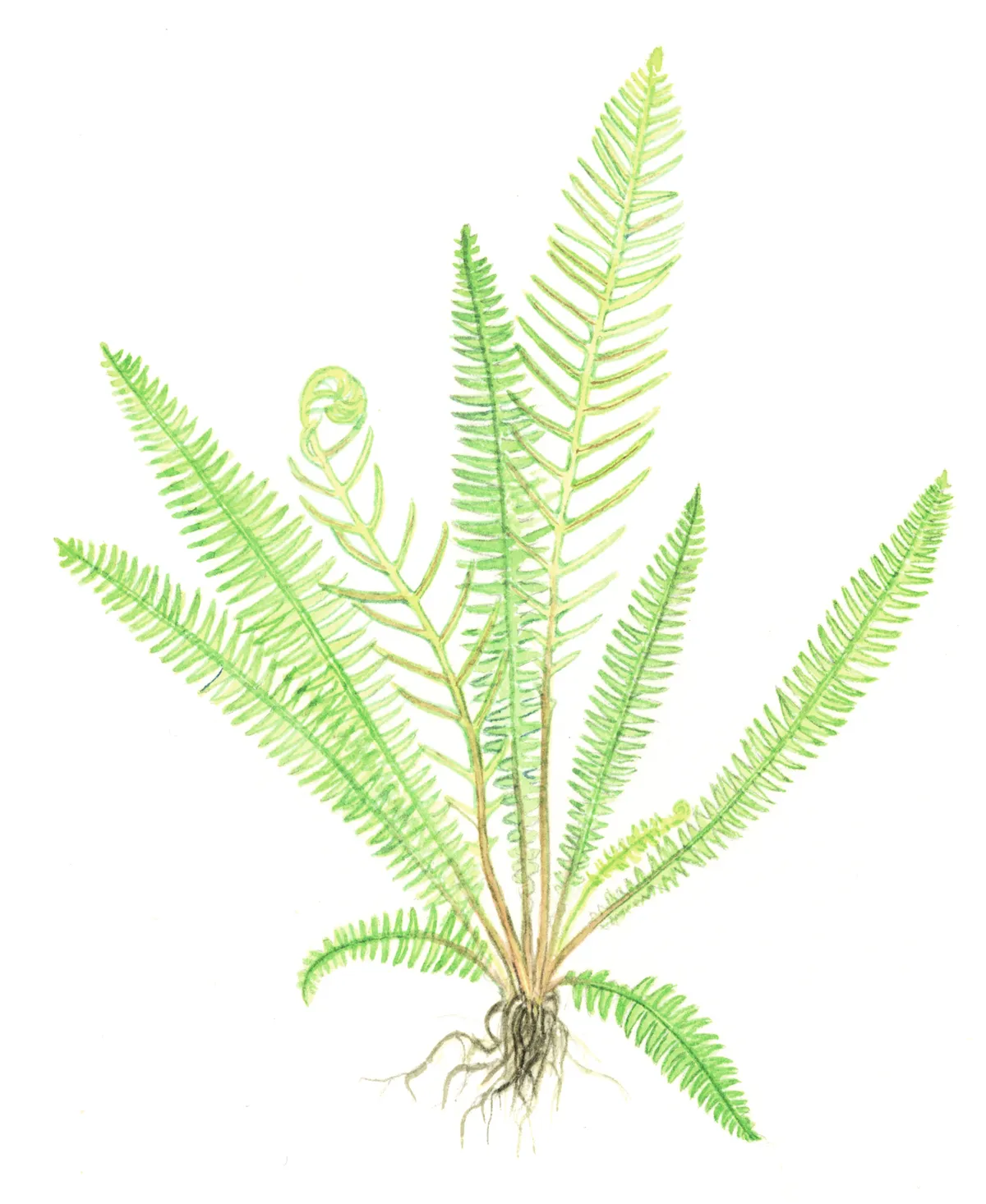
Dark green with tough, leathery fronds, the hard fern can be found in woods and moors with acid soils. It grows in the west and north, and in localized patches elsewhere.
Whereas most UK ferns are tripinnate, meaning each leaflet jutting off from the stem divides further, (looking like a mini bushy tree), the hard fern is singly pinnate making it appear sleek and attractive.
The fern has both sterile and fertile fronds, with sterile fronds generally lying on the ground beneath the fern to take up energy from the sun, and fertile fronds jutting straight up.
Maidenhair spleenwort (Asplenium trichomanes)
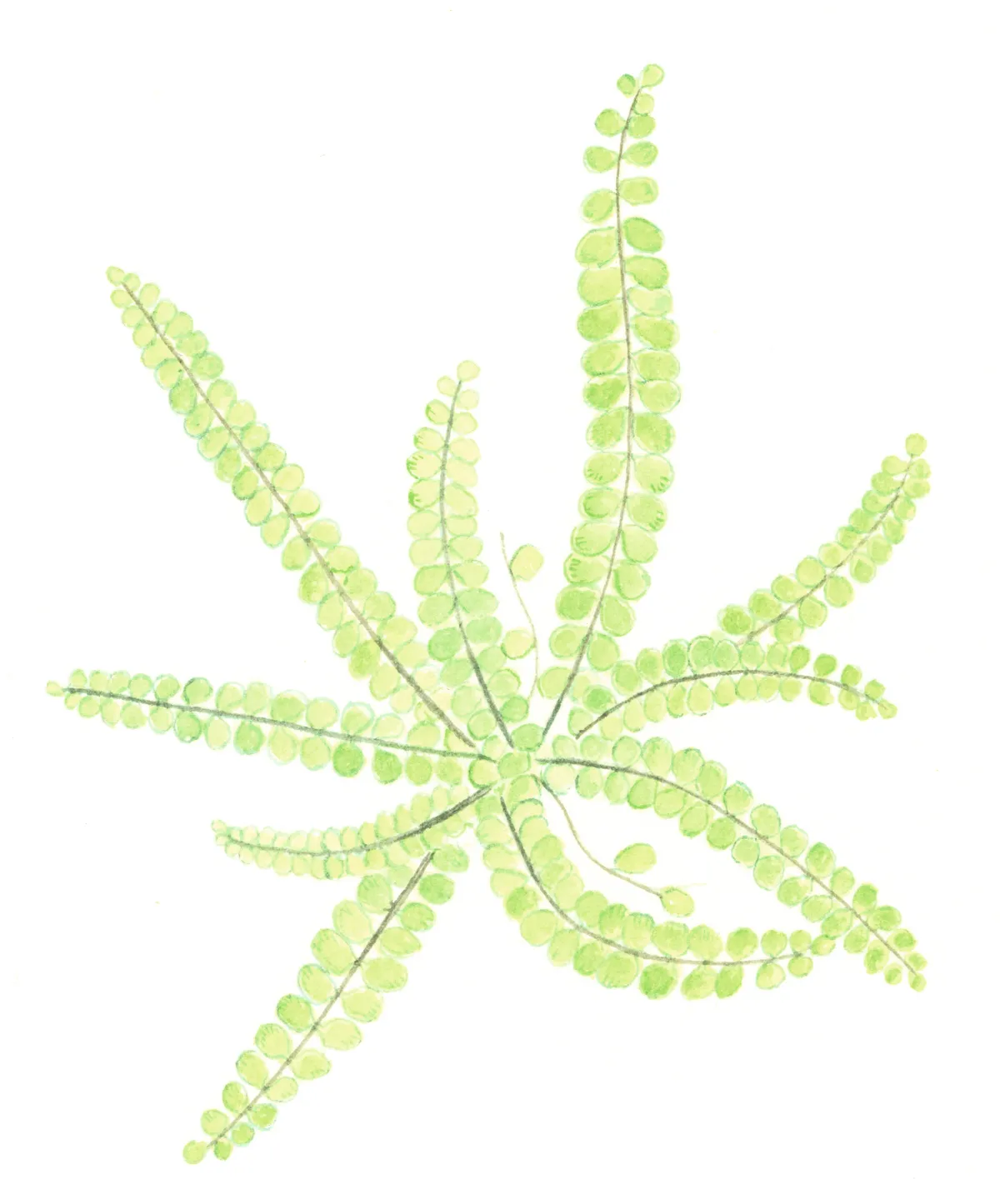
This small fern has delicate fronds with rounded leaflets on wiry, black stalks. It is found on walls, rock faces and branches across the UK.
It prefers dry habitats and flourishes on well-aerated walls. It is dainty and popular for gardens, where the light green leaves provide a handsome contrast with the dark stem. The spores under the leaves mature in summer and autumn, ripening from red to brown.
Wall rue spleenwort (A. ruta-muraria)
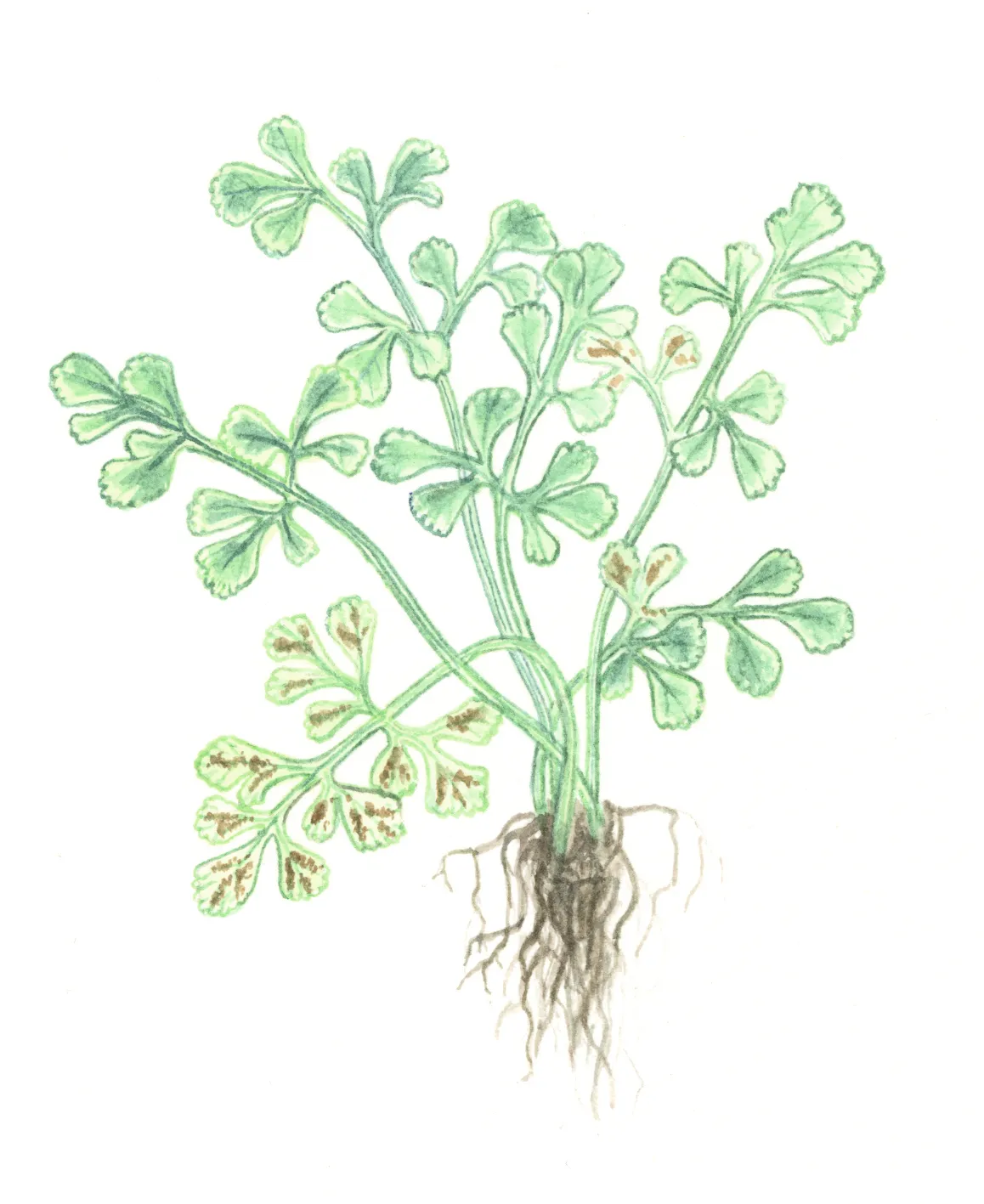
A small fern with dark green fronds and spoon-shaped leaflets. A lime lover, it’s often found on limestone or the mortar in old brick walls, alongside the maidenhair spleenwort and hart’s tongue fern.
It is an evergreen that disperses its spores in October. Consider planting it in garden rockeries as cover for insects.
Black spleenwort (A. adiantum-nigrum)
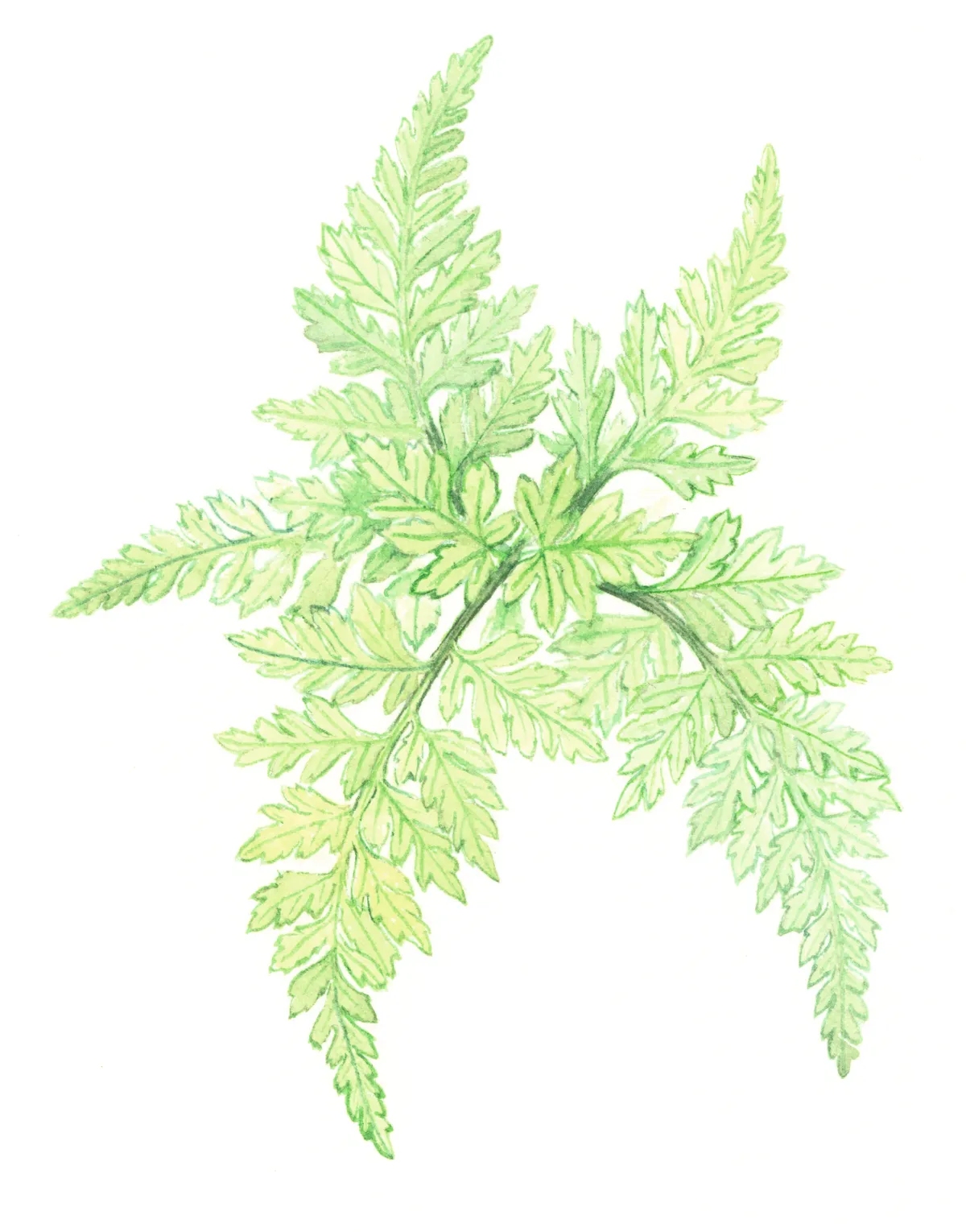
This small fern has glossy, triangular fronds with reddish-brown or black stalks. The leaves of the black spleenwort are quite firm compared to other ferns. It lives in rocks, limestone, wall mortar and banks.
Spores of the species are ripe from June to October, and appear as a brownish, orangish aggregation on the underside of leaflets. Sometimes the spleenwort can appear a darker green when it appears on the forest floor, without much exposure to sun.
Rustyback fern (A. ceterach)
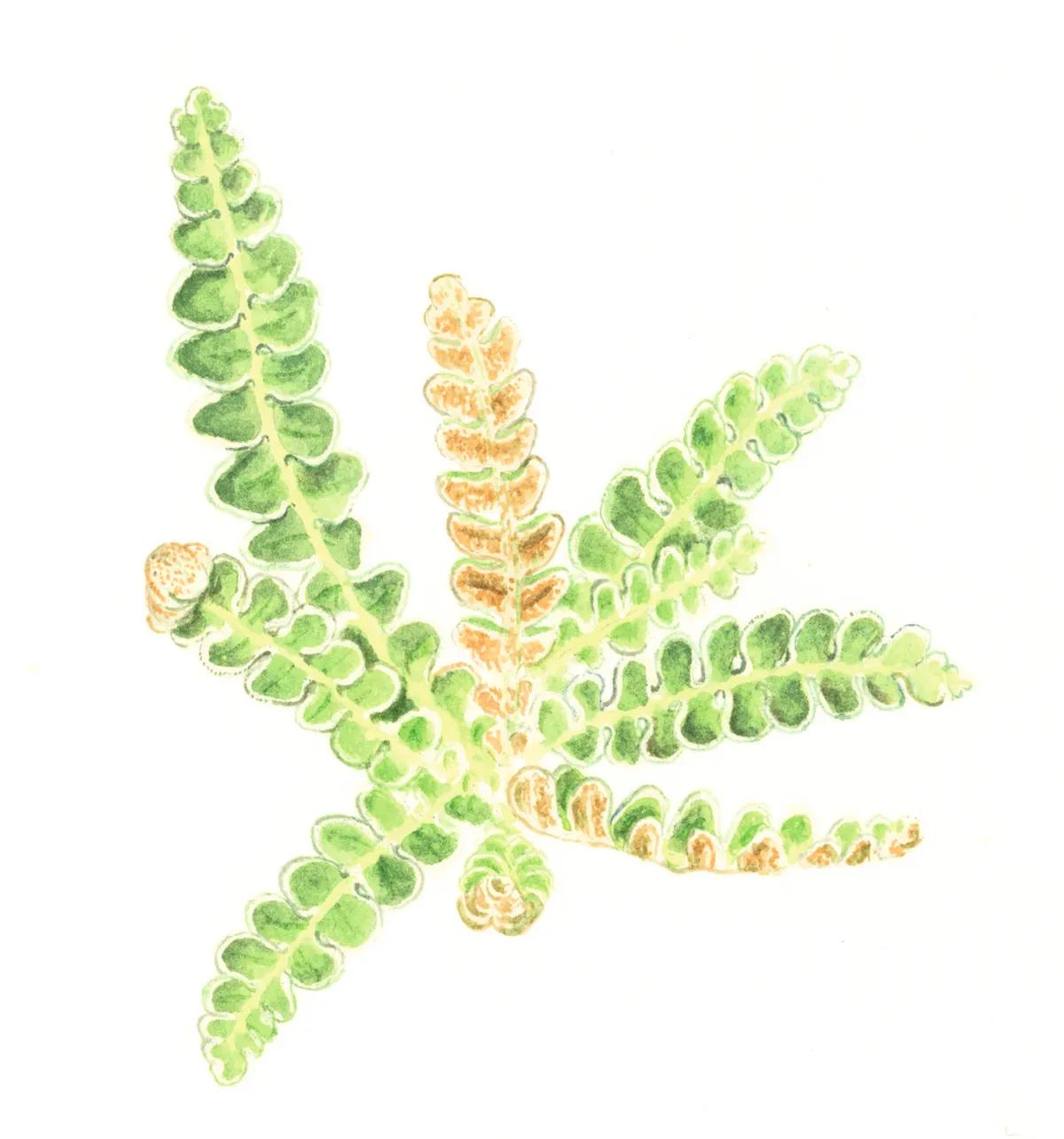
Another small fern, rustybacks live on cliffs and walls; mostly in the west. They are recognisable by their dull green fronds divided into blunt lobes which grow in a characteristic zig-zag pattern up the stem.
Importantly, as the name suggests, rustybacks also have rusty scales on the rear of their leaves. The ferns can curl when moisture is scarce, revealing this brownish side. For this reason, they appear dead in the winter, but quickly recover in wet weather.
Hart's tongue fern (A. scolopendrium)
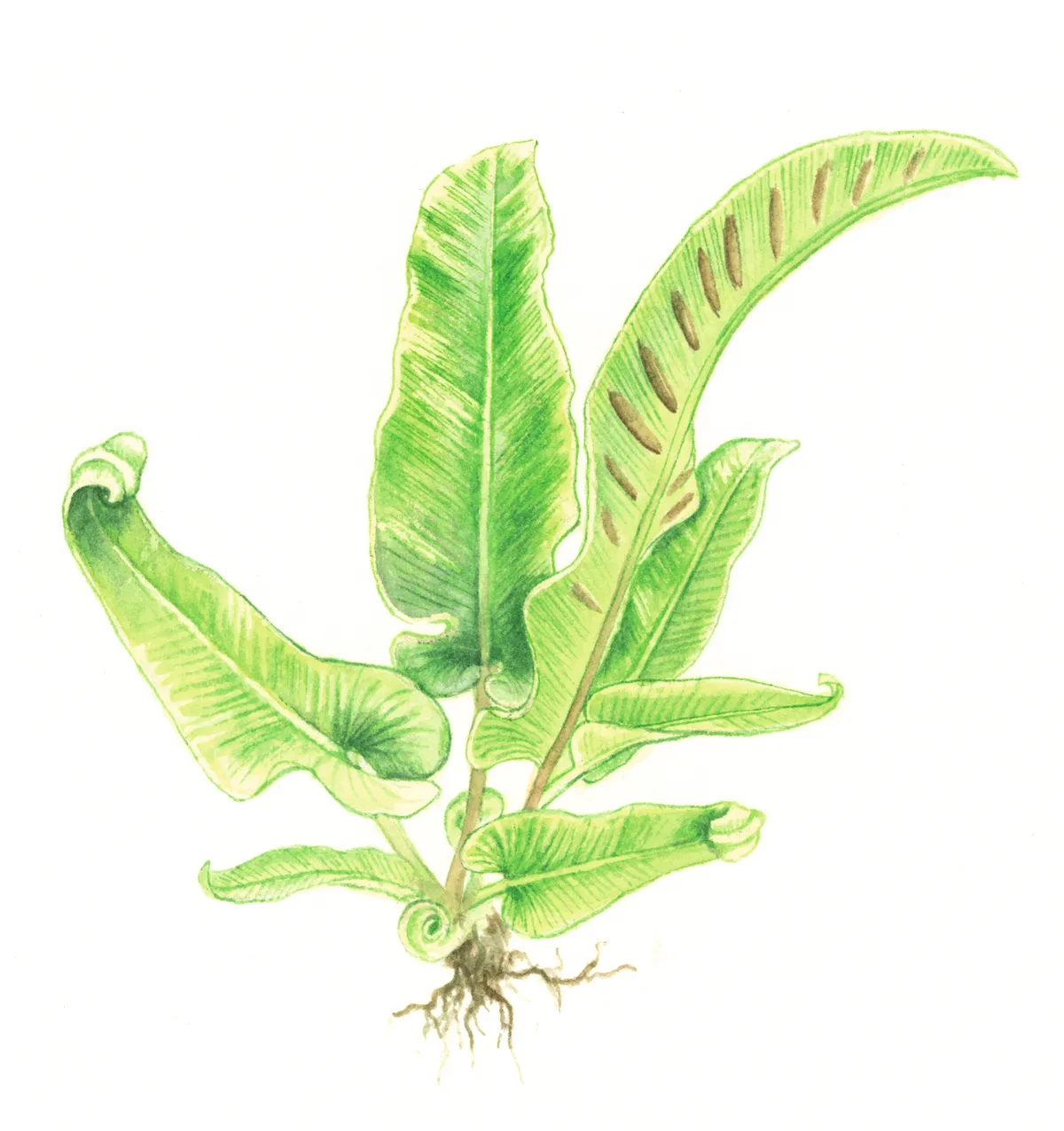
This fern inhabits woods, hedges and walls across Britain, apart from the far north. With strap-like fronds – which are not divided like the UK’s other evergreen ferns – it looks more like a tropical plant.
The plant gets its name for its similarity in shape to a deer’s (or hart’s) tongue, and the underside of the leaves have tiny marks that look like centipede’s legs. In fact, its species name, scolopendrium, is Latin for centipede. These score marks are where the spores are stored.
Sea spleenwort (A. marinum)
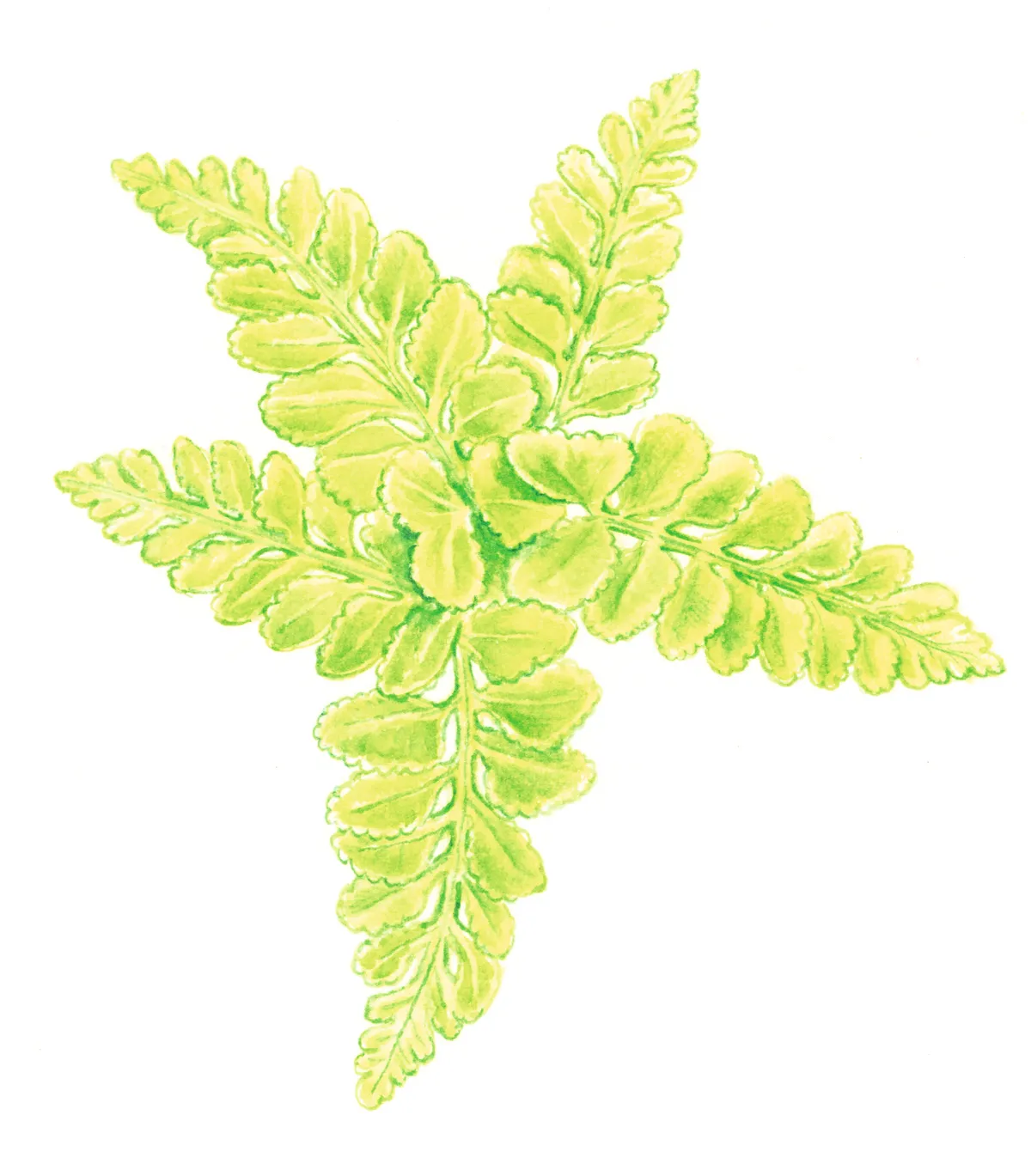
A bright green fern with leathery, fleshy fronds, sea spleenwort grows in sea caves, rocky walls and building mortar on coasts in the west and north. It is one of few ferns that can survive in salt spray!
Apart from in July and August, spores are released year-round from dashes that go across the leaf’s underside.
Older plants have much more elongated fronds than younger ones, with the appearance of alternate growing leaflets, but they actually grow directly opposite each other on the stem, only falling out of sequence as the fern grows.
Common polypody (Polypodium vulgare)
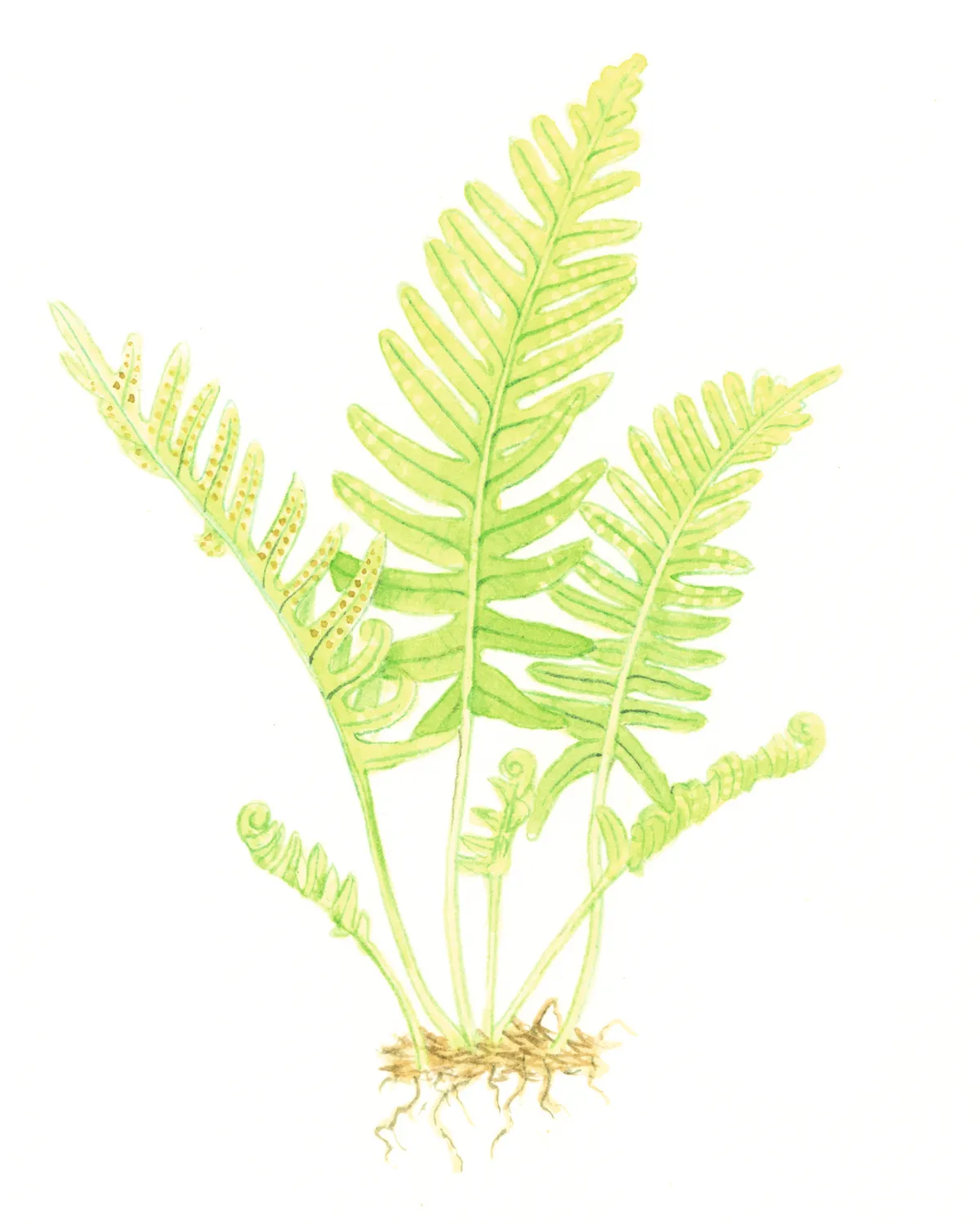
The simply divided fronds of the common polypody fern sprout from rhizomes on walls, hedgebanks and mossy tree trunks. It enjoys damp and shaded areas as well as drier gardens, but is scarcer in the east of the UK.
The leaflets are long and not very tapered, growing opposite to each other on the stem. The spore pores are dotted on the underside of the leaves.
Southern polypody (P. cambricum)
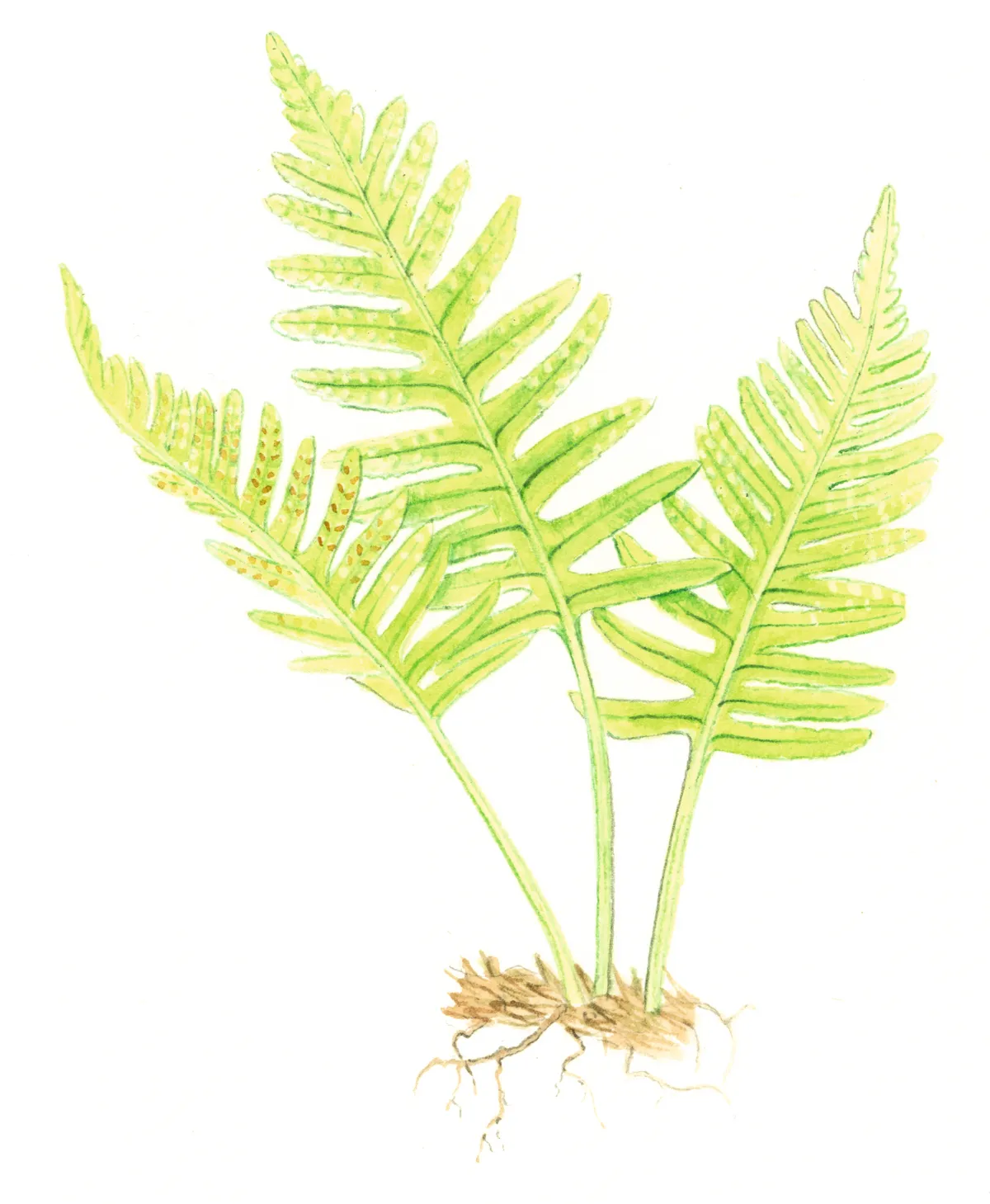
Very similar in appearance to the common polypody, the leaves of the southern species are broader and more palm-like than its generalised relative. It grows in old walls, cliffs and tree trunks, and is also less common in the east.
Of the three polypodies in the UK, this is the rarest species.
Soft shield fern (P. setiferum)
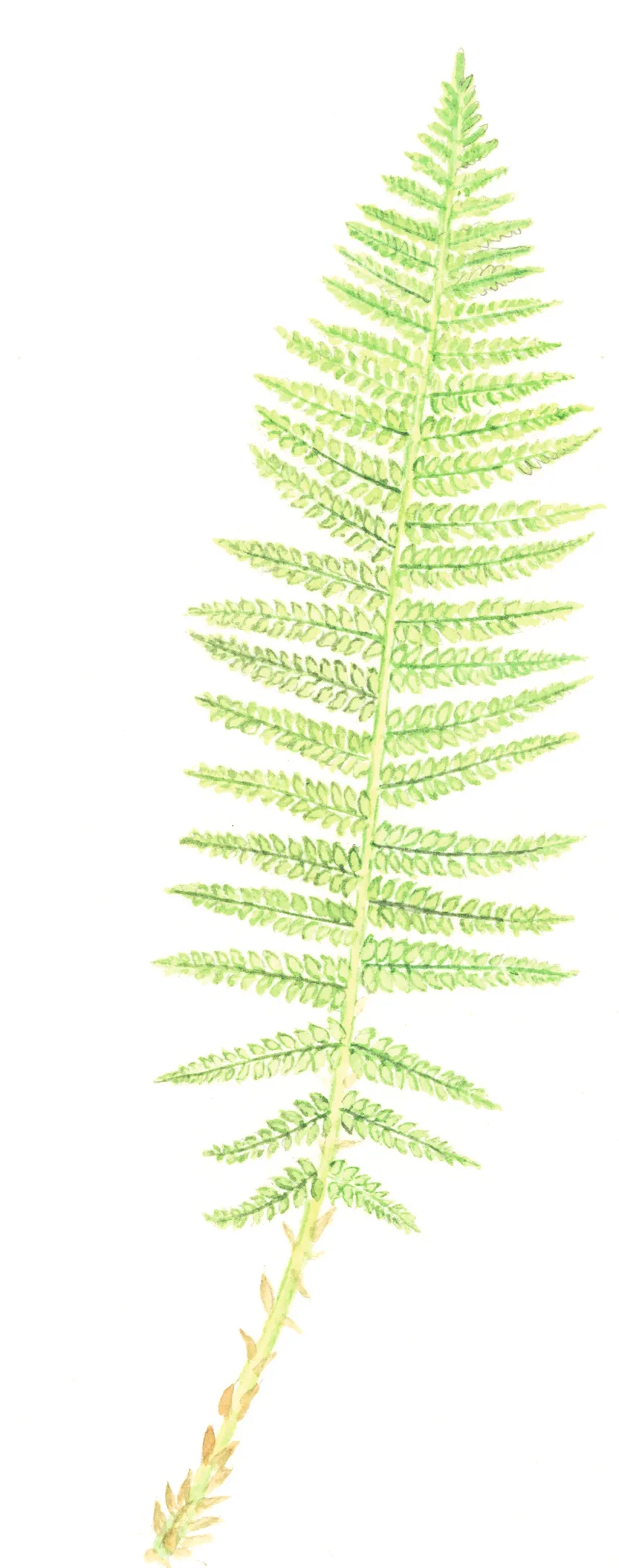
The soft shield fern has long, soft, feathery fronds, and its stalks are covered in brown scales. It grows among hedges and wooded slopes; mainly in the west and south.
It is a handsome fern that can provide a welcome green spray in autumn and winter months.
Hard shield fern (Polystichum aculeatum)

The hard shield fern is similar to the soft shield fern, but with more leathery fronds and shiny leaflets. It enjoys growing on wooded slopes or near water, preferring humus-rich soils and limestone rock.
In shady crevices, the fern remains dark green, but fronds exposed to direct sunlight come up light green.
Wilson’s filmy fern (Hymenophyllum wilsonii)
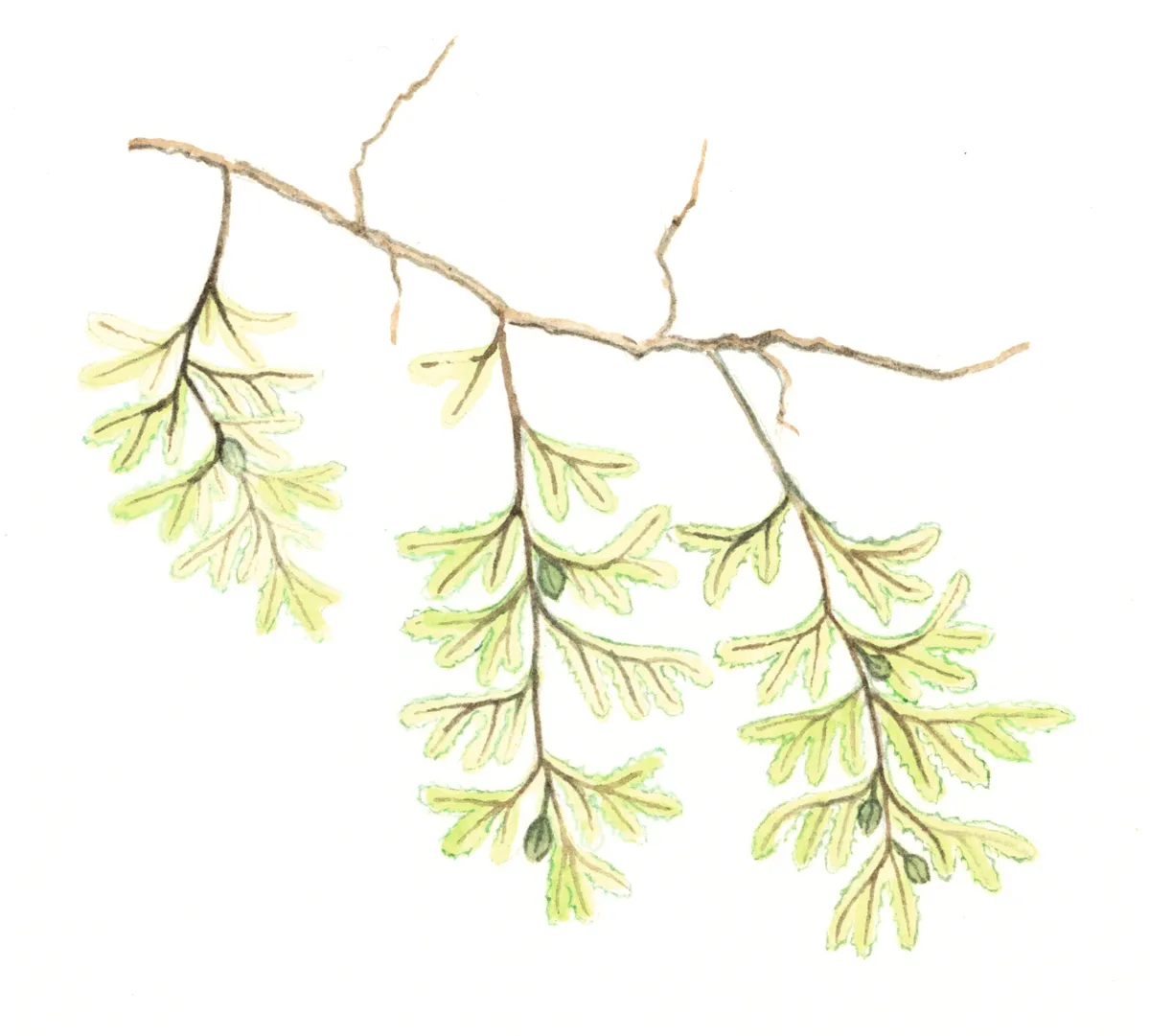
Small and creeping, Wilson’s filmy fern has translucent fronds just one cell thick. It looks like a tuft of moss at first glance, but is actually part of the fern family. The dark veins going all the way to the tips of the leaves are distinctive, but it’s easy to miss as it grows among clumps of moss.
It inhabits shady woodland in the west and north, especially in the ‘Atlantic rainforest’ region – areas of the UK with high rainfall and low temperature variation.
Main image: Hart's-tongue fern in autumn in Slovenia. © Franz Aberham